What Is Matriarchy?
What do you think a matriarchal society would look like?
#Ecotrain Question of the Week
In the last Question of the Week, we talked about Patriarchy. Its influence on society and its tie to scarcity. This week we're going to delve into Matriarchy.
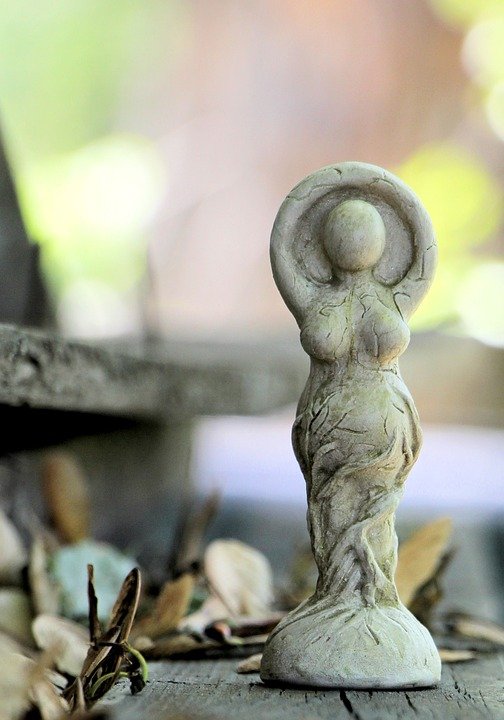
Goddess Statue
Foremost, an interesting thought that has been crossing my mind that was also expressed in @trucklife-family's post and that is that really most of us haven't experienced Matriarchy so it's difficult to write about or imagine.
Even though it is likely the original social structure of humans.
That being said, some cultures still have Matriarchal societies to this day in which the land, family name, assets and ownership of the home is passed down through the female line. It's a really interesting concept for those of us in the West because we literally don't see this anywhere en masse.
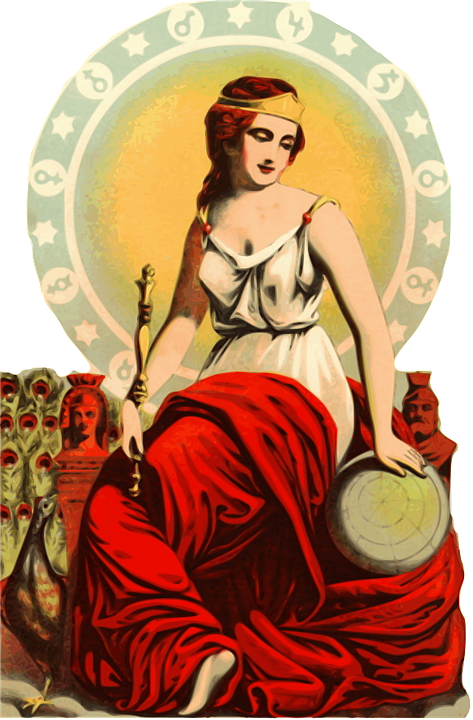
source
Matriarchal or Patriarchal - these really boil down to societal organization methods. How will we sculpt the idea of ownership, property, etc.
But more than that, the underlying reasons for one system to dominate another and take precedence has always interested me. Why is there male rule and domination in our cultures? Why is the masculine prioritized? The first-born son the chosen and hoped for one?
Has it always been this way?
And if not, how and why did it change and what was it like before?
It is this last question- What was it like before?- that interests me the most and, not being raised in a Matriarchal lineage or having any first hand experience with embedded or manifest Matriarchy, archaeology, my imagination and heart-feeling is the only type of thing I can go off of for now.
Archaeology give us clues
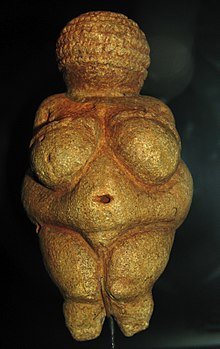
Venus of Willendorf
In a village near Lower Austria in 1908, archaeologists stumbled upon an incredible discovery, a limestone figurine tinted with ochre and made with local materials believed to be carved between 24,000 and 22,000 BCE. To many of us today, the figurine may not make sense. We may wonder what type of significance a plump, fecund figurine would take on to the people who created her. Many attribute it to fertility, childbearing or even that she is a Goddess image. It would be merely interesting if this was an isolated incidence, but soon many more would be found and this is more than an isolated event, but points to a widespread cultural experience.

Venus of Dolní Věstonice
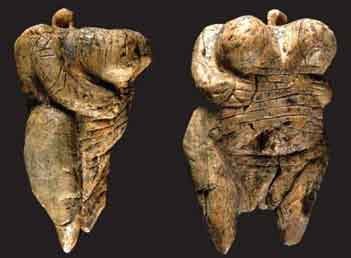
Venus of Hohle Fels
When God Was A Woman
These figurines bring up an interesting question. Were these depictions of the Goddess at that time? And to these early human cultures, was God a Woman? Many people have written extensively on these subjects, including Merlin Stone who wrote a book When God Was A Woman, Riane Eisler and Marija Gimbutas, and it is to these scholars that I will turn your attention if you're interested in reading more of their highly researched accounts. To me, it tingles my senses, sparks my intuition and fans the flames of an internal fire that knows that this is true.
I do believe that prior to the colonization and domination largely done by Hebraic tradition, most of the world worshipped in an earth-based way and this included high prioritization of the Mother Goddess. The Monotheistic religion that demanded complete subservience to its God and the abolition of all other idols or pagan deities was incredibly forceful and violent in its takeover, suppression, and dominance of these earth-based religions. This is intimately tied to Patriarchy and our culture's current Masculine-dominant leadership, religions, politics, etc.
When The Goddess Was Worshipped,
All Women Were Her Representatives
To our ancestors who lived in complete connection with the land and its cycles, the Mother Goddess was highly revered. Women have long been compared to the Earth and Capitalism and Patriarchy take their toll on our Mother Earth's body and on the bodies of women worldwide. We see this in large effect as forests are denuded and women are raped and treated as possessions (even our modern notion of "arm candy" harkens to this).
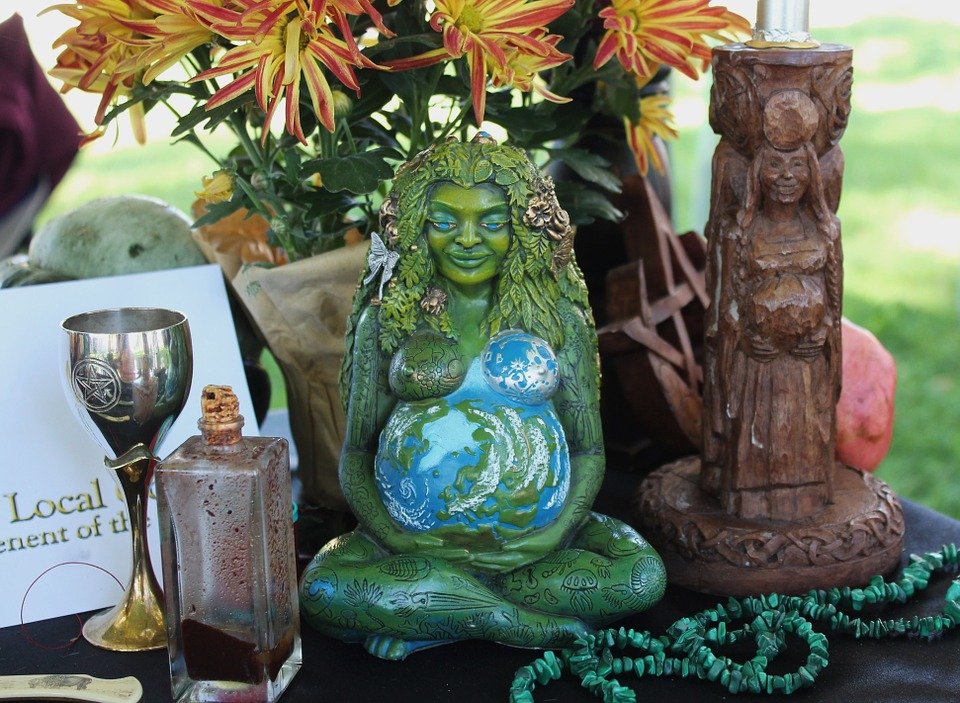
source
Women represent fertility and nurturance as does our Mother Earth, along with fierce strength and destuction. When the Goddess was worshipped, women had a higher place in society, their bodies weren't under threat, they naturally held positions of power, made decisions, and they themselves and their bodies were revered as manifestations of the Goddess.

Rocky Valley Labyrinth Tintagel
Egalitarianism
One thing that comes up during this discussion is that Matriarchy is not the mirror image of Patriarchy. In a matriarchal society, yes things are passed down the female line, but instead of a paradigm of one upmanship, scarcity and domination, matriarchal societies are egalitarian meaning all humans are fundamentally equal and deserving of the same social status. Instead of being just a swap out where women rule instead of men in the same ways that Patriarchal society currently runs, the thread and basis of society is based on equality.
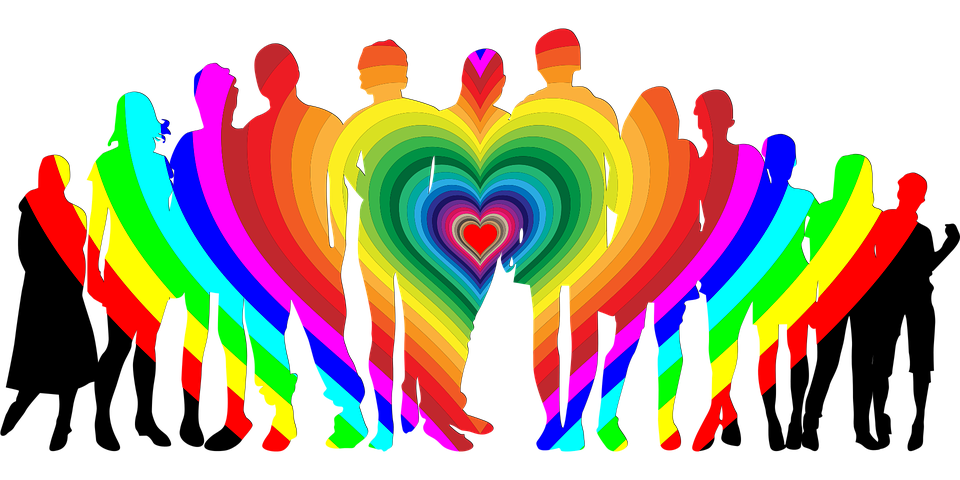
source
With this lack of competition and basic security of being, humans have an ability to flourish and opportunity to cooperate, care, nurture and thrive instead of perpetually existing in a state of lack or scarcity.
This brings us back around to the Venus figurines shared earlier in the article. Representations of worship which include fecundity and abundance set society up for a much different storyline than those of never having enough resources. A fecund woman of abundance as the object of worship speaks to a valuation of these principles.
In a society where each person has an inherent worth, right to live and isn't having to endlessly prove themselves, we can cooperate with one another. It is this aspect that I believe is at the heart of what a Matriarchal society would look like.
I have always loved this line by Wendell Berry, one of my favorite poets, in his Manifesto: The Mad Farmer Liberation Front:
Put your faith in the two inches of humus
that will build under the trees
every thousand years.
Listen to carrion – put your ear
close, and hear the faint chattering
of the songs that are to come.
Expect the end of the world. Laugh.
Laughter is immeasurable. Be joyful
though you have considered all the facts.
So long as women do not go cheap
for power, please women more than men.
Ask yourself: Will this satisfy
a woman satisfied to bear a child?
Will this disturb the sleep
of a woman near to giving birth?
This speaks to a society that makes space for women and prioritizes birth, connection, enoughness and future thinking. I believe a Matriarchal society would value these things in this long-reaching way... the two inches of humus naturally and slowly building.
In short, It would value life!
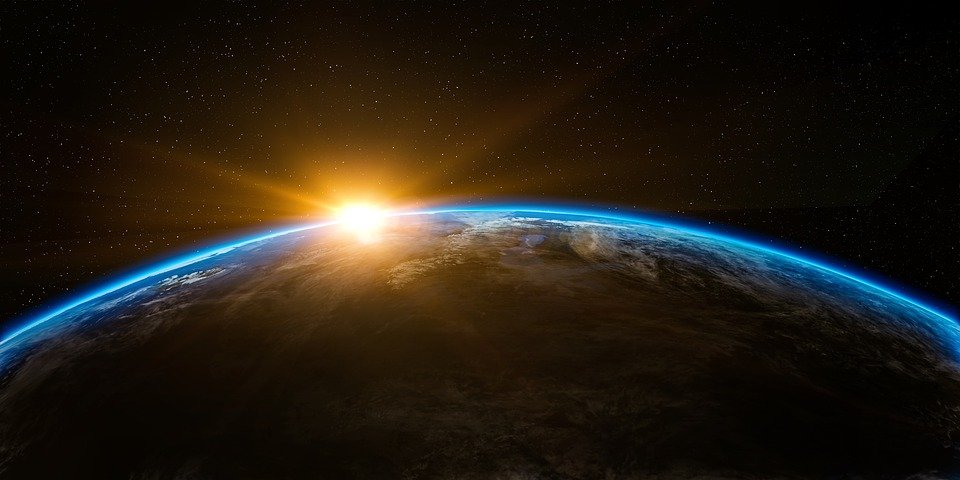
source
I believe in a very bright future for humanity. So many of us are waking up to these realities that we must look toward the future while we're investing in the Now. No more heedless destruction for momentary gain. Cooperation and working together is the way that we thrive. No human is better than another and each of us is full of gifts that we have to share with the world! This is what I believe is at the heart of the past Matriarchal societies and it is this which we foucs on @mountainjewel to live into being! The dawn of the future humanity is bright indeed!
For a fantastic vision one member of the #ecotrain had of this way of life, I invite you to read @sashagenji's answer here. Also, please check out the responses by other members of the #ecotrain!!!

